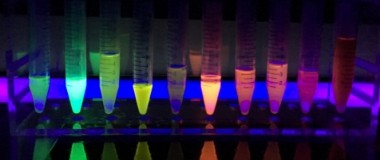Advances in fluorescent protein development for super resolution fluorescence imaging

Watch online now!
In this webinar with George Patterson, you will learn how three common types of behaviors in fluorescent proteins – photoactivation, photoswitching and photoconversion – have been engineered to be taken advantage of in fluorescent protein development.
What will you learn?
- What fluorescent proteins are, how they work and where they came from
- How fluorescent proteins can be categorized
- How photoactivation, photoswitching and photoconversion work
- How fluorescent proteins fit into super resolution imaging
Featured speaker:
George Patterson
Investigator, NIBIB, NIH
George completed his PhD at the Vanderbilt School of Medicine in the lab of David Piston before accepting a post-doctoral position in the lab of Jennifer Lippincott-Schwartz. During his post-doctoral training, he developed reagents and techniques for fluorescence imaging in the study of secretory protein trafficking.
After 4 years, he accepted a staff scientist position at the NIH, where he continued to work in protein trafficking and in collaborative efforts with Eric Betzig and Harald Hess in the development of new fluorescence imaging techniques.
He accepted a position in the National Institute of Biomedical Imaging and Bioengineering at the NIH in October 2009, where he continues his work on fluorescent protein development and super-resolution imaging techniques for use in cell biology applications.
Watch now!
This webinar was recorded on 6th November 2018
Sponsored by:
![]()